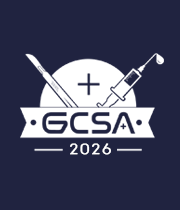Title : Reactive Airway Dysfunction Syndrome (RADS) in paediatric burns: Unravelling a rare consequence of inhalational injury with management guidelines
Abstract:
Background: With the advancements in burn care, it is now possible for many children to survive severe burn injuries. However, inhalation injury is still considered a significant predictor of morbidity and mortality in burn injury cases. When a child inhales smoke and toxic gases, it can lead to various pulmonary complications, such as airway obstruction, pulmonary edema, decreased pulmonary compliance, and ventilation-perfusion mismatch. Additionally, it can also result in systemic toxicity due to carbon monoxide poisoning and cyanide toxicity. Inhalation injury is diagnosed based on the patient's medical history and physical examination and confirmation done through bronchoscopy. Over a 10-year period, 850 paediatric burn patients with inhalation injury were reviewed across multiple centre, revealing a mortality rate of 16%. The primary cause of death was pulmonary dysfunction and sepsis. However, for those who required mechanical ventilation for over a week, mortality rates increased from 25% to 50%.
Discussion: Survival rates for inhalational injuries in paediatric thermal burn patients are exceptionally low. This report highlights two cases at the AIIMS New Delhi Burns and Plastic Department involving electric flash burns. Both patients received intensive care in the ICU for three months. During the course of treatment, one patient developed reactive airway disease, necessitating intubation twice, with subsequent challenges in weaning and the eventual need for tracheostomy. Persistent hypercapnia posed difficulties during decannulation.
After three months of dedicated multidisciplinary efforts, including coordinated care by anaesthesiologists and critical care teams, along with support from paediatric and pulmonology departments, both patients achieved successful decannulation post tracheostomy. Sustained room air saturation of 97% was maintained in the first patient. The same algorithm was applied to the second patient, resulting in survival for both. Additionally, ongoing daily care, dressing, and debridement by plastic surgeons played a crucial role in the comprehensive management of these challenging cases.
Conclusion: We had discussed the challenges faced in the management of reactive airway dysfunctional syndrome due to inhalational injury in paediatric patients and the treatment algorithm for the same which requires a low threshold for suspecting, more common in resource-limited countries due to economic constraints, so more studies are needed from such countries.



